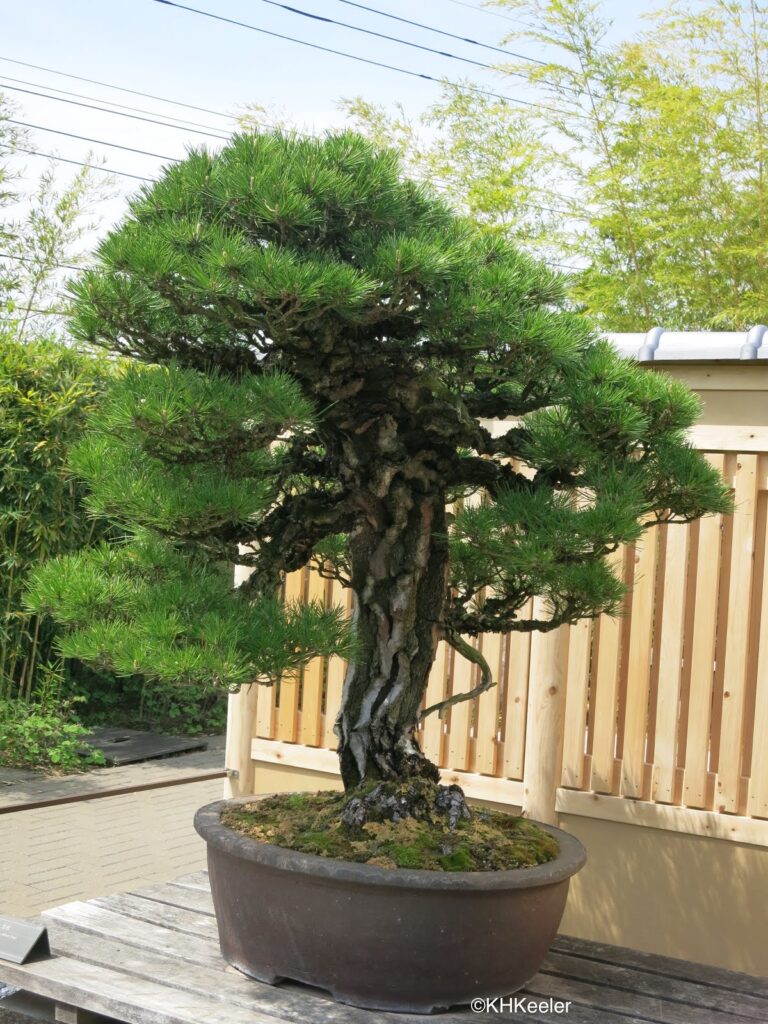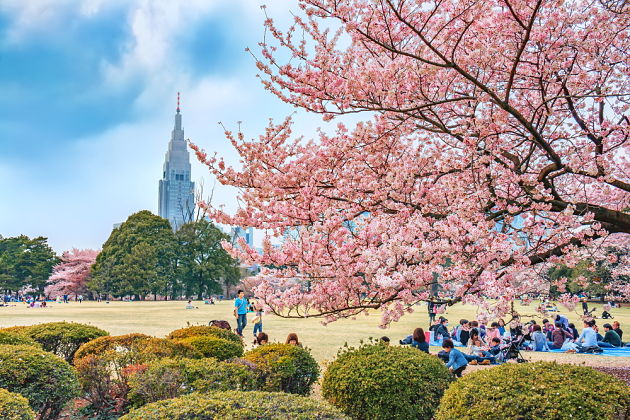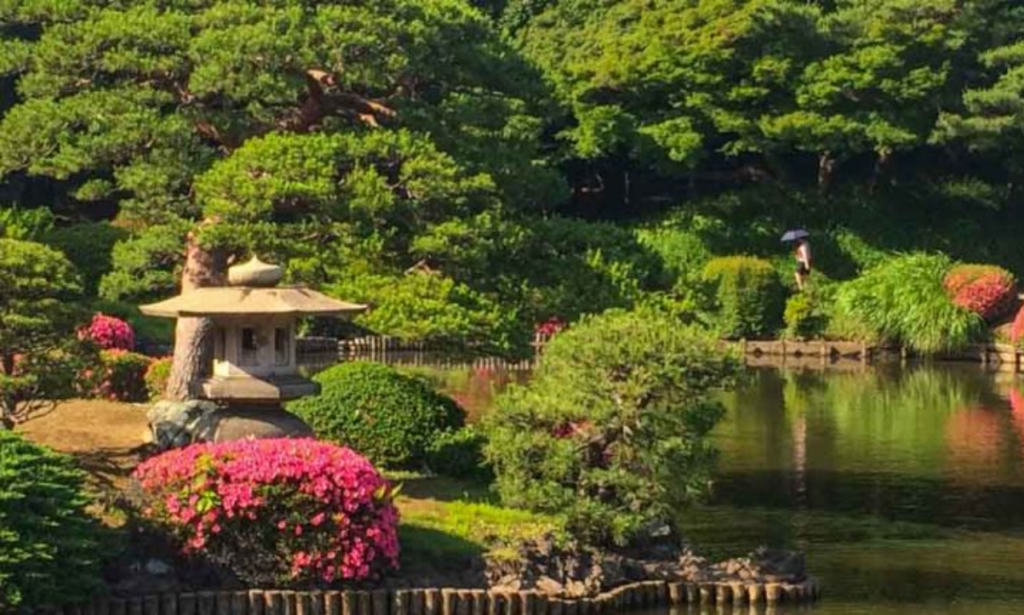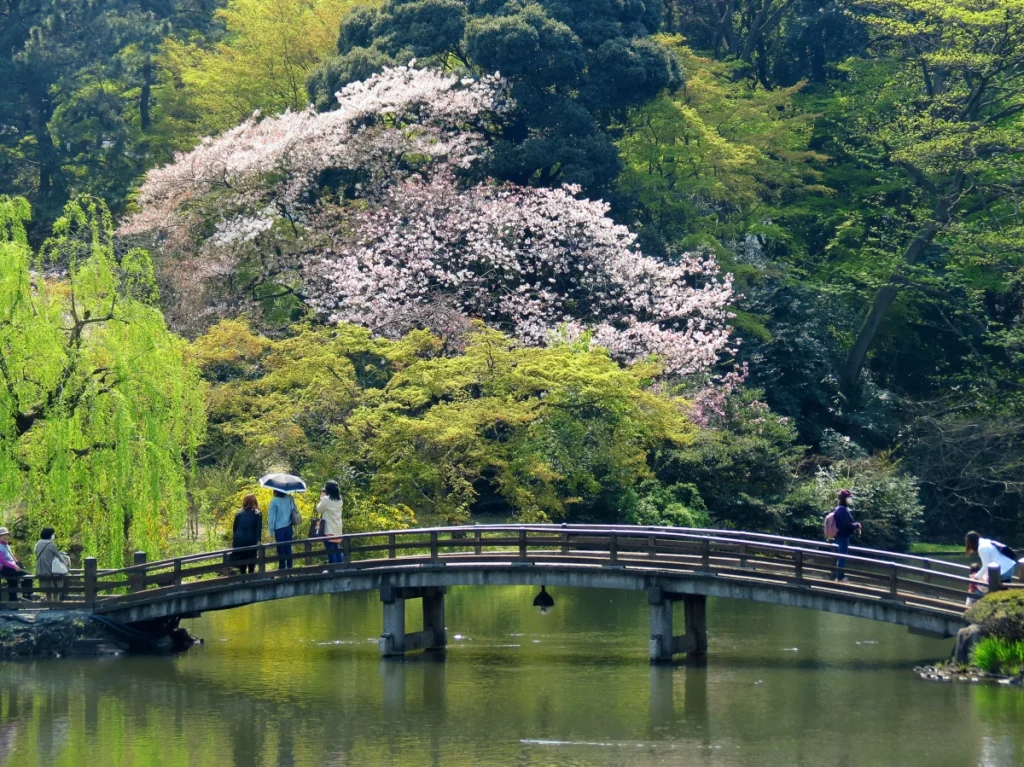Introduction
What is shinjuku gyoen national garden?
Nestled in the bustling heart of Tokyo, shinjuku gyoen national garden is a serene oasis that beautifully blends traditional and modern landscapes. Covering an impressive 58.3 hectares, this expansive garden offers a tranquil escape from the city’s hectic pace. Known for its diverse garden styles and seasonal beauty, Shinjuku Gyoen provides a perfect retreat for nature lovers and tourists alike.
Significance and Appeal of Shinjuku Gyoen
Shinjuku Gyoen’s appeal lies in its harmonious mix of Japanese, English, and French garden designs. Each section of the garden offers a unique experience, from the meticulously maintained Japanese traditional gardens to the expansive English landscape gardens. Its historical significance, combined with its picturesque settings, makes it a must-visit destination.
Historical Background
Origins of Shinjuku Gyoen
Shinjuku Gyoen was originally a private garden for the Imperial family during the Meiji era. Established in 1906, it was designed to serve as a recreational space for the Emperor and his family. The garden underwent significant changes over the years, including adaptations during World War II and its opening to the public in 1949.
Evolution Over the Years
The garden has evolved from a royal playground into a public park, reflecting various historical phases and influences. Its transformation showcases Japan’s commitment to preserving cultural heritage while adapting to modern needs.
Key Historical Events
Notable events in the garden’s history include its role in cultural exhibitions and international events. Shinjuku Gyoen has hosted flower shows, traditional festivals, and even international diplomatic gatherings, highlighting its significance beyond just a recreational space.
Garden Layout and Design
Overview of the Garden’s Layout



Shinjuku Gyoen is divided into three main garden styles: the Japanese Traditional Garden, the English Landscape Garden, and the French Formal Garden. This layout offers visitors a diverse range of landscapes to explore, each with its own unique charm.
Japanese Traditional Garden Features



The Japanese Traditional Garden is characterized by its serene ponds, meticulously pruned bonsai, and seasonal cherry blossoms. This section is designed to evoke tranquility and reflect the changing seasons through its carefully planned aesthetics.
Western Landscape Influences
The English Landscape Garden features rolling lawns, naturalistic ponds, and meandering paths. This section contrasts with the formal Japanese gardens, offering a more informal and picturesque landscape that invites leisurely strolls and picnics.
The English Landscape Garden
With its emphasis on natural beauty and open spaces, the English Landscape Garden provides a relaxing environment. It’s ideal for those looking to enjoy a more casual garden experience, complete with scenic views and spacious lawns.
The Tropical and Subtropical Greenhouse

The greenhouse at Shinjuku Gyoen showcases a variety of exotic tropical and subtropical plants. It offers a unique experience for visitors interested in seeing plant species that are not native to Japan, providing a glimpse into diverse plant life from around the world.
Key Attractions

The Main Garden Area
The central garden area of Shinjuku Gyoen is home to expansive lawns, large ponds, and beautiful walking paths. It serves as the heart of the garden, offering visitors stunning views and a central spot to enjoy the garden’s various features.

Cherry Blossom Viewing Spots
Springtime at Shinjuku Gyoen is magical, with cherry blossoms in full bloom. The best spots for cherry blossom viewing include the large pond area and the garden’s southern end, where the trees create a breathtaking canopy of pink and white flowers.

Autumn Foliage Highlights
In autumn, Shinjuku Gyoen transforms into a vibrant display of red, orange, and yellow leaves. The Japanese Traditional Garden and English Landscape Garden are particularly stunning during this season, offering perfect opportunities for photography.
Seasonal Flower Displays


Throughout the year, Shinjuku Gyoen hosts various seasonal flower displays. From tulips in spring to chrysanthemums in autumn, the garden’s flower beds offer a constantly changing landscape of color and beauty.
Special Features and Structures


Key features of Shinjuku Gyoen include traditional tea houses, historic bridges, and ornamental ponds. These elements add historical and aesthetic value, enriching the visitor experience with both visual and cultural interest.
Visitor Information
Opening Hours and Admission Fees
Shinjuku Gyoen is open daily from 9:00 AM to 4:30 PM, with extended hours during peak seasons. Admission fees are affordable, and discounted rates are available for groups and children. It’s a good idea to check the official website for the most current information on fees and hours.
How to Get There
The garden is easily accessible from Shinjuku Station. A short walk or public transportation can take you to the nearest subway stations, Shinjuku-Gyoenmae or Shinjuku-Sanchome, both of which are close to the garden’s main entrances.
Rules and Etiquette
Visitors should adhere to the garden’s rules, such as no picnicking in designated areas, no feeding wildlife, and maintaining quiet to preserve the garden’s peaceful atmosphere. Respecting these guidelines ensures a pleasant experience for everyone.
Facilities and Amenities
Shinjuku Gyoen offers various amenities, including restrooms, snack bars, and picnic areas. These facilities make it convenient for visitors to enjoy a full day at the garden without needing to leave the premises.
Seasonal Highlights
Spring Blossoms

Spring is the most popular time to visit shinjuku gyoen national garden, thanks to the cherry blossoms. The garden’s cherry trees create a stunning spectacle, making it an ideal time for leisurely walks and photography.
Summer Attractions

In summer, the garden’s lush greenery and open spaces provide a refreshing escape from the city heat. The garden also hosts events and activities, adding extra enjoyment to your visit.
Autumn Colors

Autumn brings a spectacular display of foliage to Shinjuku Gyoen. The vibrant colors and cooler temperatures create a perfect setting for exploring the garden and taking memorable photographs.
Winter Tranquility

Winter at Shinjuku Gyoen offers a quiet and peaceful experience. The bare trees and serene ponds provide a different kind of beauty, ideal for reflective walks and enjoying the garden’s winter charm.
Practical Tips for Visitors
Best Times to Visit
To avoid crowds and fully enjoy Shinjuku Gyoen, consider visiting on weekdays or early in the morning. Weekends and public holidays can be busy, especially during peak seasons like cherry blossom or autumn foliage times. Arriving early also allows you to enjoy the garden’s tranquility and capture the best light for photography.
Photography Tips
For the best photographs, bring a camera with a good zoom lens to capture detailed shots of flowers and landscapes. Early morning or late afternoon light provides soft, golden hues that enhance the garden’s beauty. Don’t forget to take advantage of the various vantage points, like the bridges and raised platforms, to get different perspectives of the garden’s stunning features.
What to Bring
Bring comfortable walking shoes, as the garden is quite large and involves a fair amount of walking. Depending on the season, pack an umbrella or sunscreen, a hat, and a water bottle to stay comfortable. If you plan to picnic, ensure you’re aware of the designated areas to enjoy your meal.
Guided Tours and Maps
Consider joining a guided tour to gain deeper insights into Shinjuku Gyoen National Garden’s history and design. Maps are available at the entrance and on the official website, which are helpful for navigating the garden and finding key attractions. Audio guides are also available for a self-paced exploration of the garden’s highlights.
Expert Insights
Expert Opinions on Garden Design
Garden designers and horticulturists admire Shinjuku Gyoen for its successful integration of different garden styles. The careful blending of Japanese, English, and French design elements showcases the garden’s versatility and aesthetic appeal. Experts highlight how the garden’s design facilitates a serene experience, blending natural beauty with cultural heritage.
Notable Events and Their Impact
Shinjuku Gyoen has been the venue for various notable events, including international flower shows and traditional Japanese festivals. These events enhance the garden’s reputation and attract visitors from around the world. They also contribute to the garden’s cultural significance, showcasing its role as a vibrant cultural and historical landmark.
Future Developments
Future plans for shinjuku gyoen national garden include ongoing conservation efforts and enhancements to visitor facilities. The garden’s management is focused on preserving its diverse plant collections and improving accessibility. Upcoming projects may include new educational programs and interactive exhibits to further engage visitors and enhance their experience.
Bottom Lines
Summary of Key Points
Shinjuku gyoen national garden is a remarkable blend of historical significance and natural beauty. With its diverse garden styles, seasonal highlights, and tranquil settings, it offers something for every visitor. From cherry blossoms in spring to autumn’s vibrant foliage, the garden’s changing landscapes provide a continuous source of wonder and relaxation.
Final Recommendations
For a memorable visit to Shinjuku Gyoen National Garden, plan your trip around the seasonal highlights to experience the garden at its best. Follow the practical tips for a smooth and enjoyable visit, and consider exploring guided tours for an enriched experience. Shinjuku Gyoen is more than just a park; it’s a cultural gem that beautifully captures the essence of Japan’s natural and historical heritage.
Read More: https://theinstantdigest.com/cape-cod-rail-trail/
